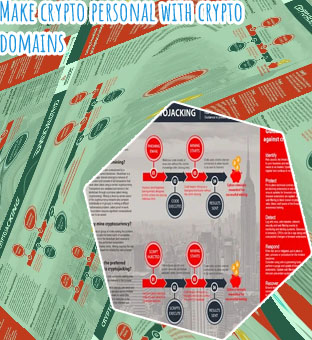Decentralized crypto
Our most popular stories
But given the time horizons, barriers to adoption, and sheer complexity involved in getting to TCP/IP levels of acceptance, executives should think carefully about the risks involved in experimenting with blockchain. Clearly, starting small is a good way to develop the know-how to think bigger. But the level of investment should depend on the context of the company and the industry. Financial services companies are already well down the road to blockchain adoption. Manufacturing is not. Cryptocurrency to turn private into blockchain Legal and regulatory hazards aside, as both an investment and currency, bitcoin is very risky. When you wake up in the morning, you know pretty precisely how much a dollar can buy. The financial value of a bitcoin, however, is highly erratic and may swing widely from day to day and even hour to hour.
What is a blockchain in crypto
Is one way of incentivizing users to help maintain an accurate historical record of who owns what on a blockchain network. Bitcoin uses proof of work, which makes this method an important part of the crypto conversation. Blockchains rely on users to collate and submit blocks of recent transactions for inclusion in the ledger, and Bitcoin's protocol rewards them for doing so successfully. This process is known as mining. Privacy Settings A theft of nearly USD 73 million worth of customers' bitcoins from one of the world's largest cryptocurrency exchanges, Hong-Kong-based Bitfinex, demonstrated that the currency is still a big risk. The likely cause was stolen private keys, which are personal digital signatures.

Potential risks
A blockchain is essentially a digital ledger of transactions that is duplicated and distributed across the entire network of computer systems on the blockchain. Each block in the chain contains a number of transactions, and every time a new transaction occurs on the blockchain, a record of that transaction is added to every participant’s ledger. The decentralised database managed by multiple participants is known as Distributed Ledger Technology (DLT). What is blockchain technology? The digital economy should work for all Americans. That means developing financial services that are secure, reliable, affordable, and accessible to all. To make payments more efficient, the Federal Reserve has planned the 2023 launch of FedNow—an instantaneous, 24/7 interbank clearing system that will further advance nationwide infrastructure for instant payments alongside The Clearinghouse’s Real Time Payments system. Some digital assets could help facilitate faster payments and make financial services more accessible, but more work is needed to ensure they truly benefit underserved consumers and do not lead to predatory financial practices.
What is blockchain and cryptocurrency
The first cryptocurrency was bitcoin. The bitcoin domain was registered in 2008, but the first transaction took place in 2009. It was developed by someone called ‘Satoshi Nakamoto’. However, there is speculation that Nakamoto is a pseudonym as the bitcoin creator is notoriously secretive, and no one knows whether ‘he’ is a person or a group. Errors and hackingEdit Namecoin tries to solve this problem by storing .bit domain registrations in a blockchain, which theoretically makes it impossible for anyone without the encryption key to change the registration information. To seize a .bit domain name, a government would have to find the person responsible for the site and force them to hand over the key. Other coins, also known as altcoins, were less serious in nature—notably the popular meme-based DogeCoin.

